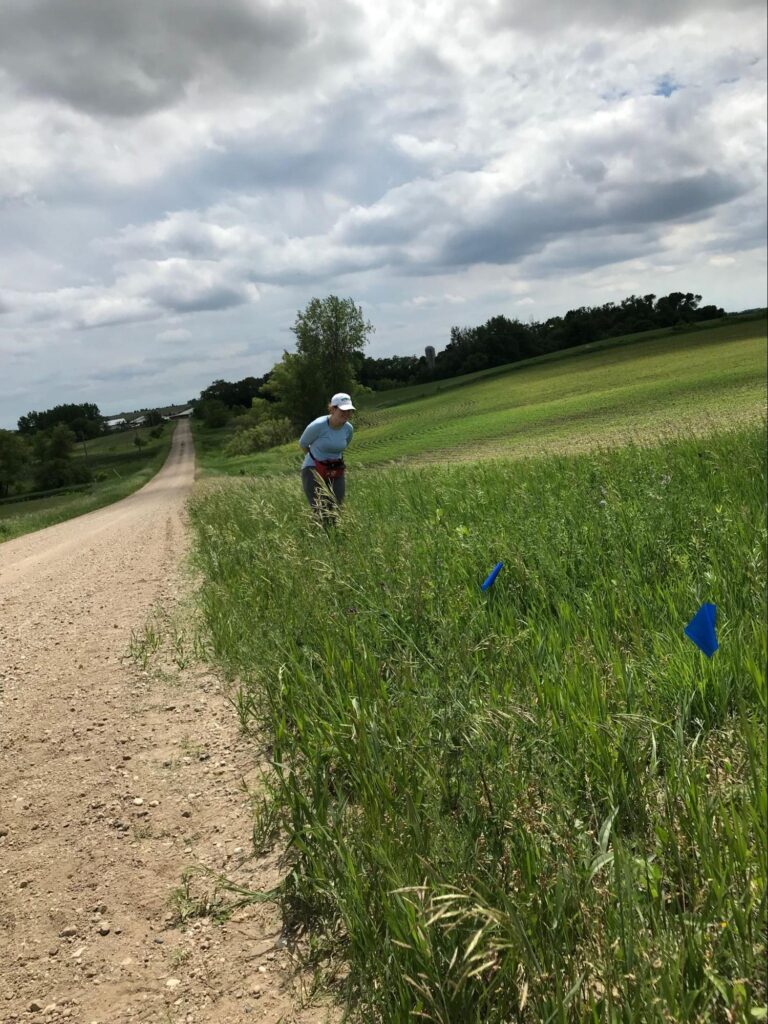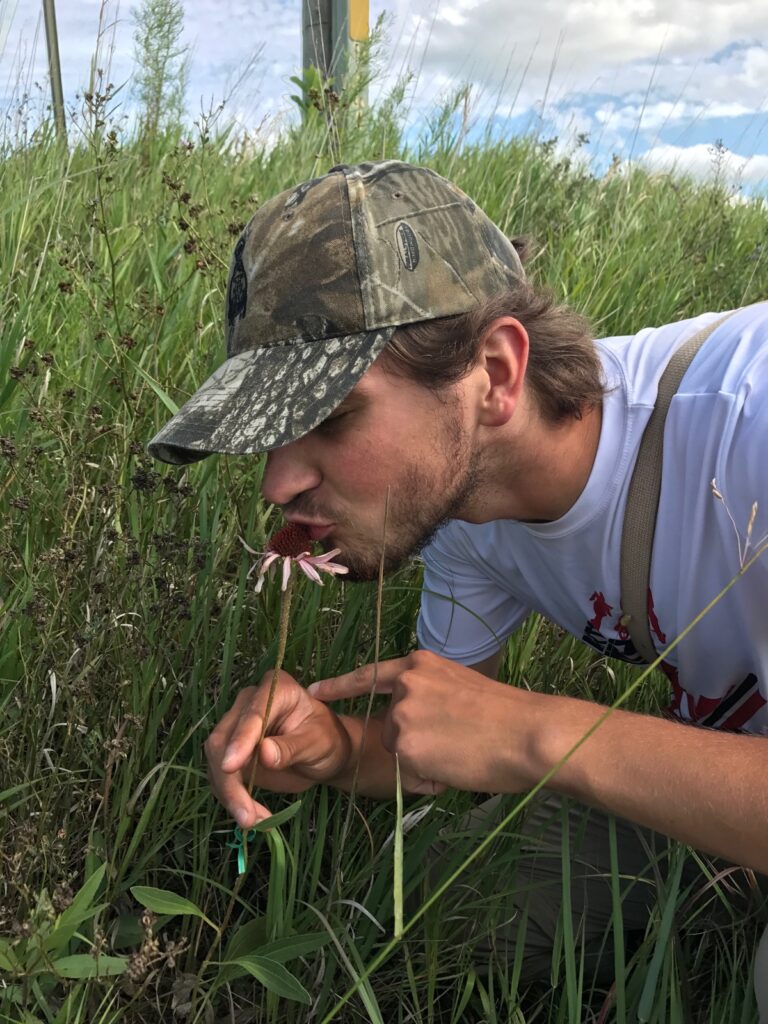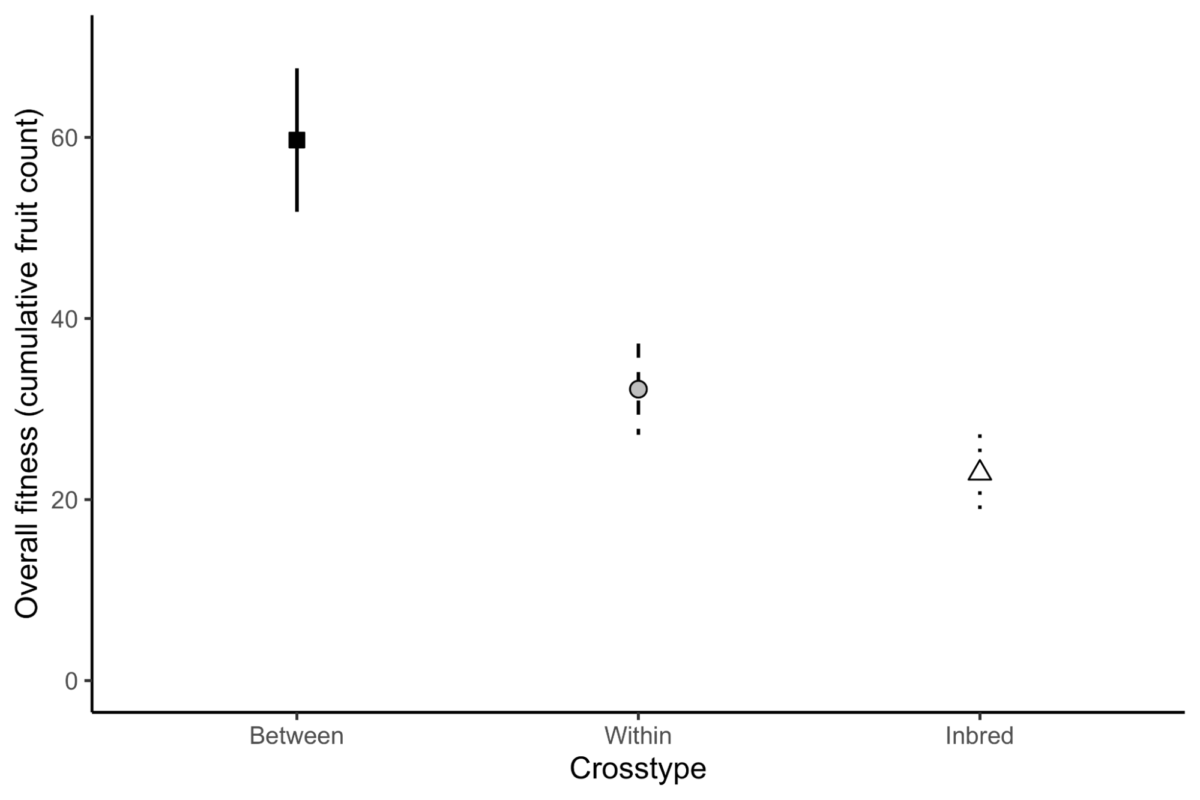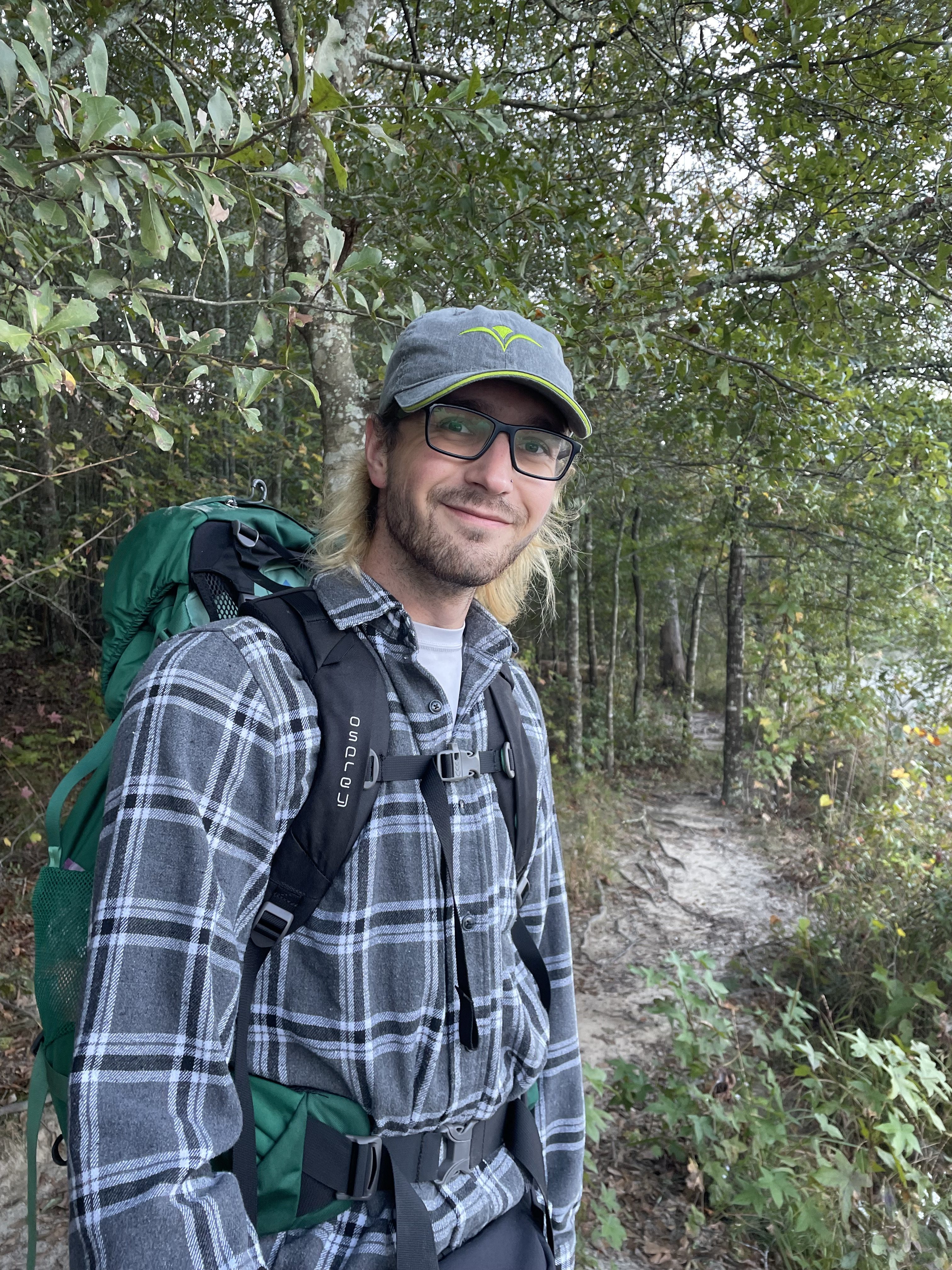If you have ever driven on a rural road, you have likely seen flowers in small patches of land on the roadside. While it is easy to write these habitat patches off as “just some on the roadside,” they actually serve as some of the last remnants of the American prairie. Before the colonization of the Great Plains by European settlers, vast swathes of land harbored richly diverse prairie. Sadly, over 95% of North American prairies have been lost to agricultural and urban development. In the wake of these changes, prairie habitat persists in tiny roadside fragments; this has severe consequences for the conservation of native species. Massive habitat loss leads to severe genetic implications for native species and ultimately results in their extermination.
The first consequence of habitat loss is that the population size of most species plummets when prairie habitat is converted to developed land (e.g., agriculture, buildings, and roadways). Plants are sessile – that is, they cannot move, except as seeds – and thus, when land is converted, only plants growing in remaining habitat persist. In other words, vast prairies covered in wildflowers are converted to roadside ditches containing tiny remnant populations of plants. This has effects on animal populations, too. Whitetail deer forage on prairie plants, and when that habitat is destroyed, they lose that major natural food source. Native prairie pollinators also lose their food sources in the nectar and pollen of flowers, and they, too, are in decline.

Following the initial decline, plant populations in fragmented habitat face a variety of new stressors: first, fewer plants and pollinators affect their ability to produce seeds, and second, isolation in small patches causes some unsavory genetic effects. Reproduction in remnant plant populations may fail due to reduced pollinator visitation, and if plants fail to produce seed, the population may not persist into future generations. Also, because there are fewer plants around, there is less pollen, so plants may be less likely to outcross to produce seeds in small fragments. Furthermore, reductions in population size can change the genetic makeup of populations, which may spell disaster for their persistence. Plants in small remnant populations are mostly limited to exchanging pollen with plants from their own population, and over time, this can give rise to inbreeding.
Ah yes, inbreeding, the process that led to the iconic Habsburg jaw, also goes on in our prairies. Inbreeding harms plant populations in the same way it causes genetic defects in humans and animals. Close relatives share large proportions of their DNA sequences, and when relatives mate, their offspring will inherit duplicates of some of those DNA sequences. This can be fine and dandy, but many stretches of the genome hold deleterious forms (i.e., they cause problems for the organism). If an offspring inherits deleterious sequences from both parents at the same location in the genome, then that sequence will rear its ugly head. Due to limited mate availability, fragmented populations of plants compound years of inbreeding, leading to the Habsburg jaw of plants: a high likelihood of mortality and low propensity to reproduce, known commonly as inbreeding depression. Over generations, inbreeding depression may not just affect individuals but potentiate the extinction of inbred populations. Evolutionary biologists predict that many generations of mating within a fragmented prairie will lead to a population where being inbred is the norm, not the exception. That is, every individual suffers from inbreeding depression.
For decades, researchers have attempted to understand the conditions under which inbreeding depression is strongest, and how we might counter the consequences of inbreeding in plant populations. A flagship example of this research is the Echinacea Project, a research group that has studied the effects of habitat fragmentation on the ecology and evolution of native plant species in west-central Minnesota since 1995. Focusing mostly on the narrow-leaved purple coneflower (Echinacea angustifolia), the Echinacea Project is leveraging long-term evolutionary and ecological studies to project the fate of long-lived prairie species in their newly fragmented habitat.

The Echinacea Project recently completed an experiment to try to further understand the problem of inbreeding in fragmented populations. In 2005, members of the project performed controlled hand pollinations within and among remnant populations of Echinacea to identify whether an expected consequence of fragmentation – inbreeding, leading to a reduction in survival and reproduction – is apparent and whether crossing between populations (known as assisted gene flow) alleviates this consequence for the resulting offspring. Hand pollinations were performed in seven populations between parents of a decreasing degree of relatedness: within family (inbred), within population but to a non-family member (within), and between populations in a 24 square mile radius (between). Offspring from these crosses were grown in an experimental plot in the natural prairie environment, and over the next 14 years, the team tracked their survival and flowering status. Under the expectation that remnant populations have undergone some, but not extensive inbreeding, the Echinacea Project hypothesized that the inbred offspring would have the lowest survival and reproduction, showing inbreeding depression. Additionally, they expected between-population crosses would increase survival and reproduction rates over within-population crosses (by “masking” deleterious stretches of the genome).
With 14 years of data in hand, the Echinacea Project was surprised by their results (but not in a good way). Controlled inbreeding barely reduced the survival and reproduction in remnant populations (see figure below). Only one population showed significant inbreeding depression, meaning that six out of the seven populations tested are already so inbred that further inbreeding does not lower their viability (data not shown, see Thoen et al. 2024 for details). This means that – if left to their own devices – remnant populations of Echinacea decline in survival and reproduction, eventually to extinction. In other words, these remnant populations are the European aristocracy of prairies.
However, not all hope is lost. In fact, this research identifies a promising solution for this potential loss of viability. In this experiment, crossing pollen between populations recovered survival and reproduction to high levels – higher levels, even, than the within-population crosses. This means that transplants between populations, or assisted gene flow, could alleviate the inbreeding depression in fragmented populations and reverse potential declines due to inbreeding.

This research provides a straightforward solution to increasing the viability of remnant prairie populations that can be implemented in a few steps. First, roadside ditches fall into private landownership, so permission is required to perform any actions. However, transplants themselves can be relatively low effort. A group of researchers may harvest some seeds from a population in one year, grow those seeds over the spring into robust seedlings, and plant them into new roadside ditches. Over time, these plants may flower and exchange pollen with plants on the roadside, which should generate more viable offspring. This research identified that most remnant populations are inbred and could benefit from assisted gene flow from nearby populations. Therefore, transplants from nearby populations may just restore the degraded survival and reproduction that is so critical for species persistence in fragmented habitats.
One last note – scientists at all levels (including high school students, high school teachers, undergraduates, and graduates), if you are interested in getting involved in research like this, please check out the Echinacea Project’s website and look through the hiring opportunities! My scientific career really took off when I worked with the Echinacea Project. While their research focus is on the conservation of fragmented habitat, the principal investigators take mentorship very seriously and prioritize training the next generation of scientists. I learned so much, and I cannot recommend working with them enough.
About the Author
Riley is a PhD student in the Department of Plant Biology. He received his B.A. in honors biology from Gustavus Adolphus College in Saint Peter, MN. Riley's research aims to understand how habitat fragmentation and climate change influence plant conservation through effects on the ecology and evolution of populations. Currently, his research highlights how climate change is affecting stress-adapted plant populations on Georgia's granitic outcrops. If he's not in the field doing his research, you'll find Riley watching marble races.
- Riley Thoenhttps://athensscienceobserver.com/author/riley-thoen/
- Riley Thoenhttps://athensscienceobserver.com/author/riley-thoen/
- Riley Thoenhttps://athensscienceobserver.com/author/riley-thoen/








